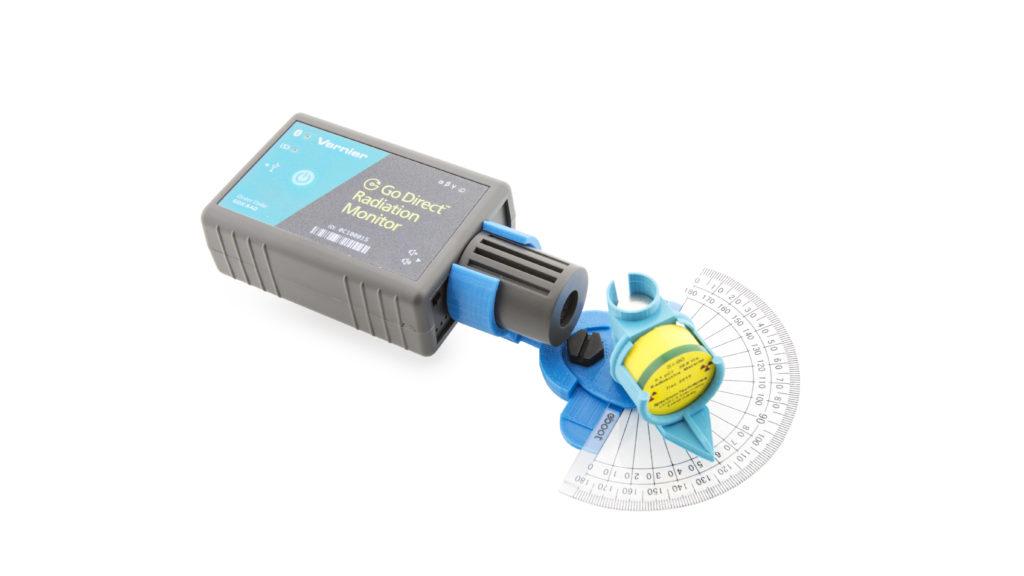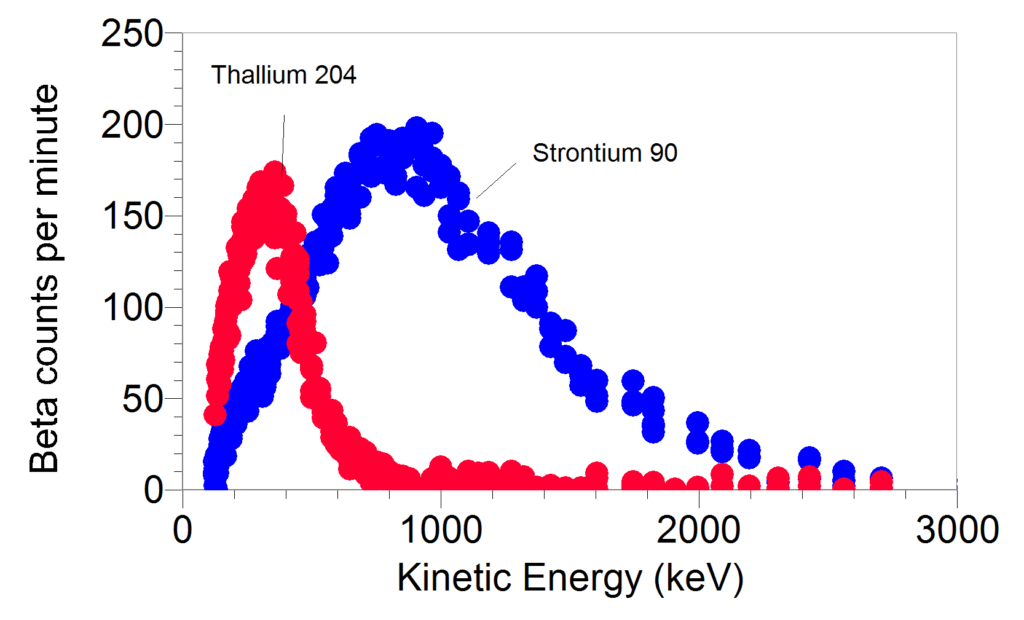When studying radioactivity, most students have heard that the consequences include everything from Godzilla to spider senses. But few students know we can safely measure the energy of radiation and study something called nuclear spectroscopy in an ordinary science lab.
A beta radiation spectrometer can be built from a Vernier Radiation Monitor, a couple of strong magnets, and a Rotary Motion Sensor. If you do not have a Rotary Motion Sensor, a protractor can be used in its place to collect data manually.

The source under study sends beta particles into a strong magnetic field. Magnets bend the path of the charged beta particles. The least energetic particles bend the most, emerging with a larger deflection angle, and the most energetic particles bend the least. As a result, the energy of a beta particle can be calculated from the deflection angle. By slowly rotating a radiation source while measuring the radiation at the other side of the magnets, you can find the number of counts per minute at any given angle. A little physics converts the measured angle to a corresponding energy. The result is a spectrum of beta radiation that can be compared with published spectra. This is one method for identifying radioactive sources.

You can also ask students to find the momentum of the beta particles and then work backwards to calculate speed. If they use Newton’s formula for momentum (p=mv), they will conclude that the particles moved faster than light! Using Einstein’s corrected formula (p=γmv), they will find a more accurate estimate of speed, providing a real-world demonstration of special relativity.
Plans for these 3D printed parts and those needed for an automated version with angles measured by a Rotary Motion Sensor are available on Thingiverse.
We thank Barry Gragg, Sam Russell, and Daniil Frants of The Dwight School in New York for contributing the idea, jig prototype, and initial analysis of using a magnet to deflect beta rays into a Vernier Radiation Monitor.
Download Beta Particle Radiation Deflector: Supplemental Instructions »
